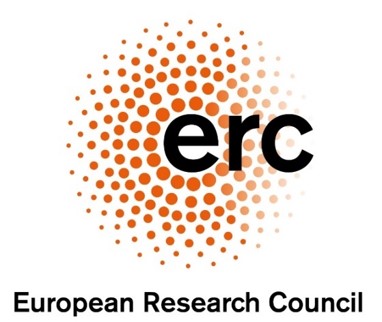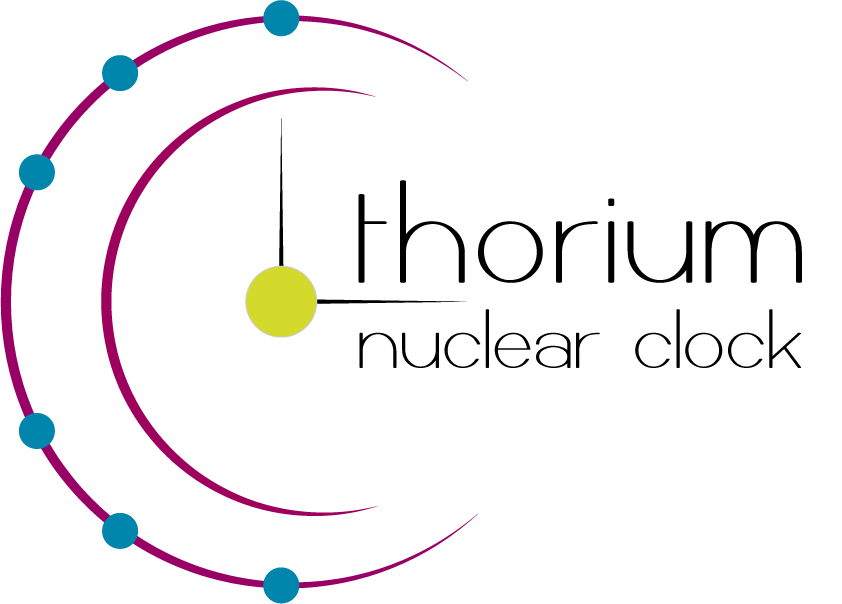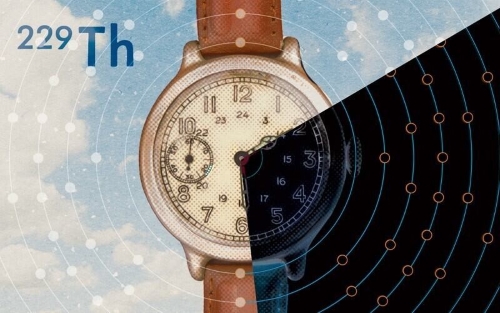Nuclear clock for fundamental physics
Our team is a part of the Thorium Nuclear Clock project funded by the European Research Council (ERC) Synergy Grant.
Project partners: Thorsten Schumm (TU Wien), Ekkehard Peik (PTB Braunschweig), and Peter Thirolf (LMU München).
The nuclear clock will open opportunities for highly sensitive tests of fundamental principles of physics, particularly in searches for violations of Einstein’s equivalence principle and for new particles and interactions beyond the standard model. The nuclear clock sensitivity to the variations of the electromagnetic and strong coupling constants and for corresponding dark matter searches is expected to be several orders of magnitude larger than for atomic clocks.
The goal of the ERC synergy project is to construct three complementary types of Thorium nuclear clocks and compare them amongst each other (and with conventional atomic clocks) to search for new physics beyond the Standard Model of elementary particles.
Recent relevant publications
- Quantum metrology algorithms for dark matter searches with clocks, M. H. Zaheer, N. J. Matjelo, D. B. Hume, M. S. Safronova, D. R. Leibrandt, arXiv:2302.12956 (2024).
- Bosenovae with Quadratically-Coupled Scalars in Quantum Sensing Experiments, Jason Arakawa, Muhammad H. Zaheer, Joshua Eby, Volodymyr Takhistov, Marianna S. Safronova, submitted to JHEP, arXiv:2402.06736 (2024).
- Detection of Bosenovae with Quantum Sensors on Earth and in Space, Jason Arakawa, Joshua Eby, Marianna S. Safronova, Volodymyr Takhistov, Muhammad H. Zaheer, submitted to Phys. Rev. D, arXiv:2306.16468 (2024).
- Direct detection of ultralight dark matter bound to the Sun with space quantum sensors, Yu-Dai Tsai, Joshua Eby and Marianna S. Safronova, Nature Astronomy 7, 113 (2023).
- Quantum Sensors for High Energy Physics, Aaron Chou et al., arXiv:2311.01930 (2024).
- The Phenomenology of Quadratically Coupled Ultra Light Dark Matter, Abhishek Banerjee, Gilad Perez, Marianna Safronova, Inbar Savoray, Aviv Shalit, J. High Energ. Phys. 2023, 42 (2023).
- New Horizons: Scalar and Vector Ultralight Dark Matter, D. Antypas et al., arXiv:2203.14915 (2022).
- Snowmass 2021: Quantum Sensors for HEP Science – Interferometers, Mechanics, Traps, and Clocks, Oliver Buchmueller, Daniel Carney, Thomas Cecil, John Ellis, R. F. Garcia Ruiz, Andrew A. Geraci, David Hanneke, Jason Hogan, Nicholas R. Hutzler, Andrew Jayich, Shimon Kolkowitz, Gavin W. Morley, Holger Muller, Zachary Pagel, Christian Panda, Marianna S. Safronova, arXiv:2203.07250 (2022).
- Precision calculation of hyperfine constants for extracting nuclear moments of 229Th, S.G. Porsev, M.S. Safronova, M.G. Kozlov, Phys. Rev. Lett. 127, 253001 (2021).
- Role of triple excitations in calculating different properties of Ba+, S. G. Porsev, M. S. Safronova, Phys. Rev. A 103, 042815 (2021).
- Low-lying energy levels of 229Th35+ and the electronic bridge process, S. G. Porsev, C. Cheung and M. S. Safronova, Quantum Sci. Technol. 6, 034014 (2021).
- Nuclear clocks for testing fundamental physics, E. Peik, T. Schumm, M. S. Safronova, A. Pálffy, J. Weitenberg, and P. G. Thirolf, Quantum Sci. Technol. 6, 034002 (2021).
- Probing the Relaxed Relaxion at the Luminosity and Precision Frontiers, Abhishek Banerjee, Hyungjin Kim, Oleksii Matsedonskyi, Gilad Perez, Marianna S. Safronova, J. High Energ. Phys. 2020, 153 (2020).

Supported by the European Research Council
European Union’s Horizon 2020 research and innovation program (Grant Agreement No. 856415)


